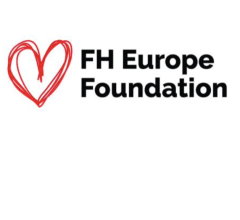
November 8, 2012 — A hydration regimen tailored to the patient’s fluid status was effective in reducing damage to kidneys in patients undergoing cardiac catheterization, according to a study presented at the 24th annual Transcatheter Cardiovascular Therapeutics (TCT) scientific symposium, sponsored by the Cardiovascular Research Foundation (CRF).
Contrast-induced acute kidney injury (CI-AKI), or contrast-induced nephropathy, refers to kidney damage that may occur due to the use of iodine contrast dye that is necessary for visualization during catheterization and other procedures. Hydration remains the cornerstone for the prevention of kidney damage. However, there are no well-defined practical hydration protocols available for the prevention of CI-AKI. The Prevention of Contrast Renal Injury with Different Hydration Strategies (POSEIDON) clinical trial investigated a novel sliding scale hydration protocol based upon routine, invasively obtained left ventricular end-diastolic pressure measurements (LVEDP) in patients undergoing cardiac catheterization.
To see a video of this presentation at TCT, click here.
Patients undergoing coronary angiography with stable renal insufficiency (an estimated GFR <60 mL/min/1.73m2) and one additional CI-AKI risk factor were randomized to an LVEDP-guided hydration strategy or a standard hydration strategy.
Both groups received 0.9 percent saline at 3 mL/kg for at least one hour prior to cardiac catheterization. The LVEDP was measured in all patients at the start of the procedure and prior to contrast administration. In the LVEDP group, the fluid rate was adjusted according to the patients’ LVEDP as follows: 5 mL/kg/hr for LVEDP <13 mmHg; 3 mL/kg/hr for 13-18 mmHg; 1.5 mL/kg/hr for >18 mmHg.
The standard hydration group was hydrated at 1.5 mL/kg/hr. The fluid rate was set at the start of the procedure (prior to contrast exposure), continued during the procedure and for four hours post-procedure. The primary outcome, CI-AKI, was defined as a greater than 25 percent or greater than 0.5 mg/dl increase in serum creatinine — an indicator of kidney damage — up to four days post-procedure.
There were 396 patients randomized, 196 in the LVEDP group and 200 in the standard hydration group. Kidney damage was found in 6.7 percent of the LVEDP-guided hydration group and in 16.3 percent of the standard hydration group (P = 0.005). There were no significant differences between groups for baseline renal function or LVEDP. The relative risk (95 percent confidence interval) for LVEDP-guided hydration versus standard hydration was 0.41 (0.22-0.79). The absolute risk difference was -9.5 percent in favor of LVEDP guided hydration; therefore, 11 patients would need to be treated to prevent one CI-AKI event.
“This is the first trial to test the hypothesis of a left ventricular end diastolic pressure-guided hydration strategy for prevention of contrast nephropathy. We found that this technique resulted in a significant 59 percent relative and 10 percent absolute reduction in contrast nephropathy,” said lead researcher Somjot Brar, M.D., MPH, interventional cardiologist and vascular specialist at Kaiser Permanente in Los Angeles and an assistant clinical professor of medicine at the University of California, Los Angeles. “This is an easily implemented protocol that can be readily adapted in both inpatient and outpatient settings.”
The trial was funded by Kaiser Permanente.
For more information: www.crf.org


 November 12, 2025
November 12, 2025 









